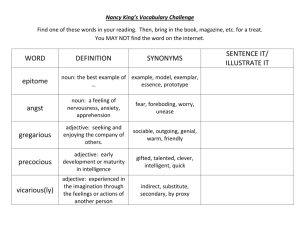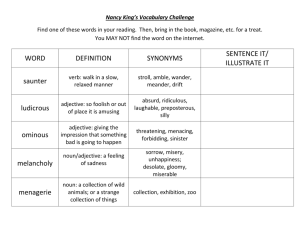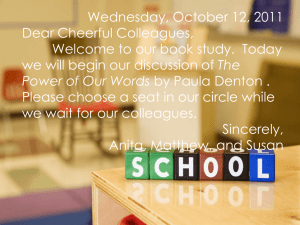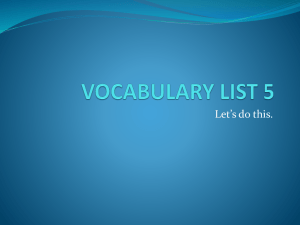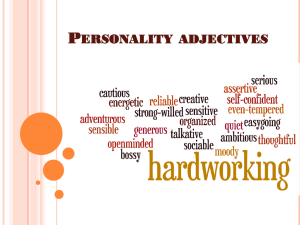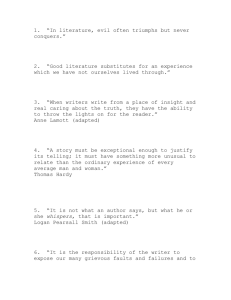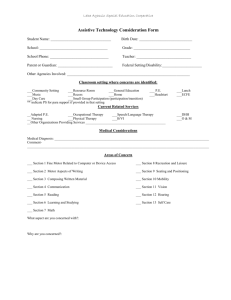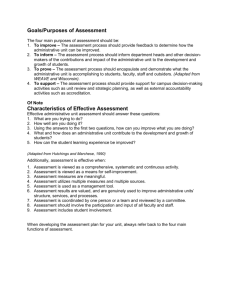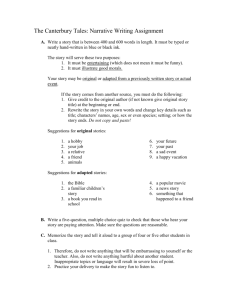Concept Maps - Introduction to Strategic Science Teaching (SST)
advertisement
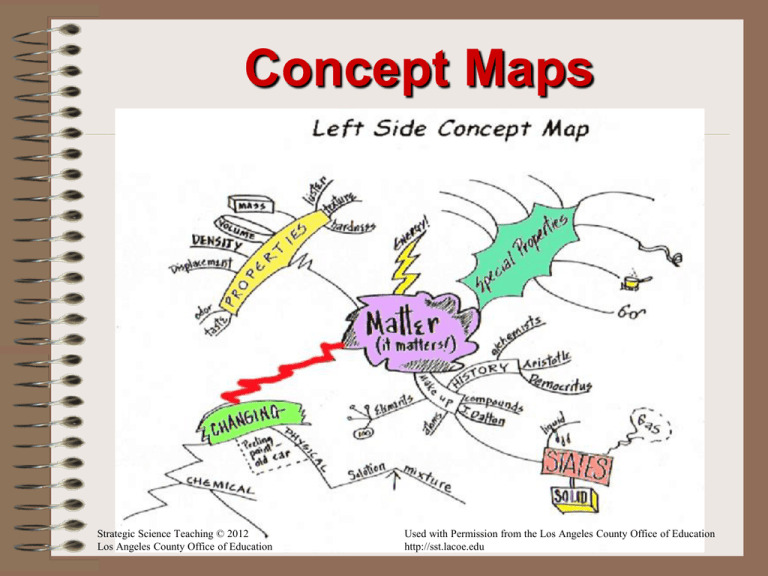
Concept Maps Strategic Science Teaching © 2012 Los Angeles County Office of Education Used with Permission from the Los Angeles County Office of Education http://sst.lacoe.edu Concept Maps (also called “Graphic Organizers”) 1.A pictoral way of important information you need to understand, remember, or write about. 1.An excellent first step in the writing process. 1.By creating, reading, and rereading, you're ready to write paragraphs, essays, or study a chapter for a test! Concept Maps 1.Harness the power of our vision to understand complex information "ata-glance." 1.It is easier for the brain to make meaning when information is presented in visual formats 2.Concept maps assist students in handling complex information Practical Applications 1.Supplements Cornell notes; left side 2.Excellent aid to group brainstorming. 3.Planning course objectives and careers 4.Providing graphics for presentations and term papers 5.A way to outline term papers and presentations. 6.Refines creative and critical thinking. Concept Map for Defining in Context Boundaries to the Concepts you Main Topic know about it brainstorming process Reading Skills: Context clues; identifying bias Adapted from “Thinking Maps® - Tools for Learning” © 1995 Concept Map for describing, using adjectives Adjective 2 Adjective 1 Adjective 3 Main Concept Adjective 6 Adjective 4 Adjective 5 Reading Skills: Vocabulary growth; identifying properties Adapted from “Thinking Maps® - Tools for Learning” © 1995 Concept Map for Comparing & Contrasting Contrast Concept 1 Contrast Contrast Compare Compare Contrast Concept 2 Contrast Contrast Compare Reading Skills: comparing critical properties & emphasis Adapted from “Thinking Maps® - Tools for Learning” © 1995 Concept Map For Classifying and Grouping The Fishes Agnatha Chondrichthyes Ostracoderms Agnathians Elasmobranchs Chimeras EXTINCT Lampreys Sharks Short-nose Ratfish Hagfish Rays Long-nose Ratfish Osteichthyes Ray-finned Lobe-finned Teleosts Coelocanths Gars, Bowfins Lung Fish Reading Skills: Main Ideas & Details; Taxonomy Adapted from “Thinking Maps® - Tools for Learning” © 1995 Concept Map For Analyzing Objects and Parts Suns Solar Systems Galaxies Comets Planets Moons M types: Red Giants Stars A type: White Dwarfs G type: Yellow stars Reading Skills: Spatial Descriptions & Anatomy Adapted from “Thinking Maps® - Tools for Learning” © 1995 Concept Map For Sequencing & Ordering Step 1 Step 1a Step 1b Step 2 Step 2a Step 2b Step 3 Step 3a Step 3b Reading Skills: Descriptions of Order & Physiology Adapted from “Thinking Maps® - Tools for Learning” © 1995 Flow Map Concept Map For Causes and Effects Cause 1 Effect 1 Problem Cause 1 Effect 1 Reading Skills: Reason/Consequence & Prediction Adapted from “Thinking Maps® - Tools for Learning” © 1995 Concept Map For Seeing Analogies electricity machine as sunlight chloroplast Reading Skills: Vocabulary & Analogical development Adapted from “Thinking Maps® - Tools for Learning” © 1995 Creative Tips 1. Review available visual materials 2. Focus upon a visual language approach 3. Consider possible formats 4. Relax and allow your mind to "free associate" 5. Draw informal sketches of your impressions 6. Experiment with a variety of visual layouts 7. Color shapes, arrows or words for emphasis 8. Imagine a bird's eye overview of the subject 9. Look with fresh eyes: are the visuals compelling? - Do they help convince the viewer that the subject matter is important and inviting? Making Maps "Should there be logging in old growth forests?” 1.Make a map for comparing & contrasting to represent the pro's and con's 1. On one side of this issue are topics like biodiversity and spotted owls 2. On the other side of the issue are topics related to the towns and families; issues of logging, foreign trade, and recreation 2.Try to come up a with a map that represents the whole issue. Revising Maps 1.Are they clear? Logical? Attractive? 1.Good maps are like good writing; they are usually the product of several drafts 2.Share, get feedback Resources for Teachers Thinking MapsTM Training 1. The "Thinking Maps" name and graphic organizers have registered trademarks. 2. This Powerpoint presentation, which includes copyrighted materials from "Thinking Maps", is not a substitute for the 3-day training offered by Innovative Learning Group. 3. For further information regarding a 3day training on Thinking Maps, go to: http://thinkingmaps.com/ Resources for Teachers Concept Maps: Web Resources 1. sitesforteachers.com 2. teacherweb.com 3. blackboard.com 4. Download inspiration.com or mindtools.com software to be able to create concept maps Resources for Teachers General Science Writing: 1. “Write to Learn Science” NSTA book by Bob Tierney Concept Maps 1. NSTA Concept map book 2. Learning How to Learn by Novak Designed by Anne Maben AP Science Coach
